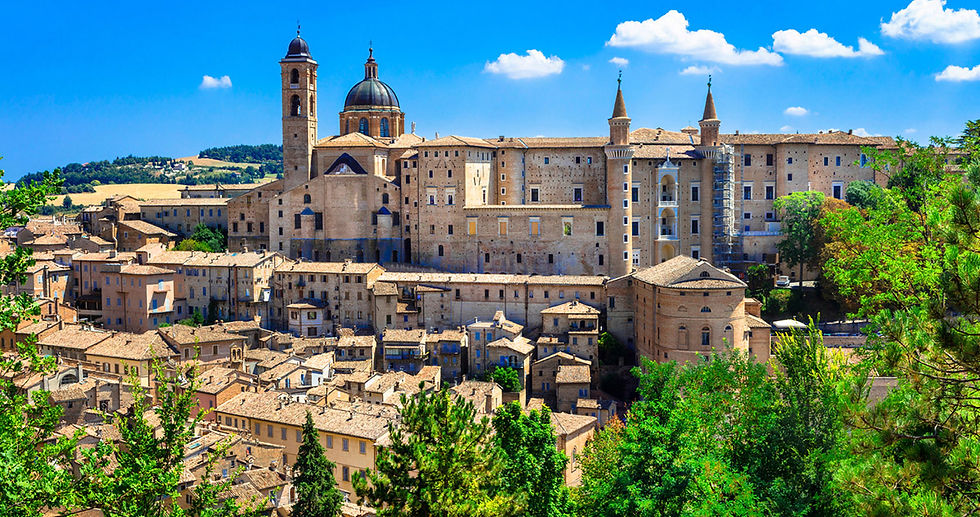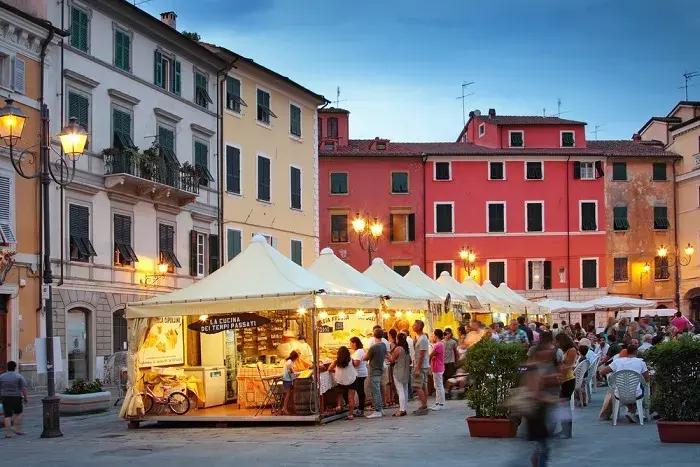On the Trail of the Renaissance in Italy: A Stage-by-Stage Itinerary Through Lesser-Known Art Cities
- Luigi Ranieri
- Jul 31
- 2 min read
When we think of the Italian Renaissance, our minds often turn to the iconic skylines of Florence, Rome, or Venice. But the true spirit of this transformative period is not confined to its most famous cities. All across Italy, magnificent centers of art, power, and intellect blossomed, leaving behind a legacy of breathtaking beauty.
For the curious traveler eager to step beyond the main tourist trails, a journey through Italy’s lesser-known Renaissance cities offers an experience that is both authentic and awe-inspiring. Join us on an itinerary that reveals hidden gems and stories that shaped an era.
Stage 1: Urbino – The Ideal Renaissance City

Nestled in the rolling hills of the Marche region, Urbino is a masterpiece of urban planning and a perfect example of the Renaissance "ideal city." Under the patronage of Duke Federico da Montefeltro, this walled city became a hub for artists and scholars.
What to See: The majestic Palazzo Ducale is the heart of Urbino. It houses the Galleria Nazionale delle Marche, home to masterpieces by Piero della Francesca and Raphael, who was born here. Simply walking through the narrow, cobbled streets is a journey back in time, culminating in breathtaking views from the city walls.
Travel Tip: Urbino is best explored on foot. Wear comfortable shoes and take your time to discover its elegant courtyards and hidden stairways.
Stage 2: Ferrara – The Court of the Este Family
Moving to the Po Valley in Emilia-Romagna, you’ll find Ferrara, a city whose destiny was shaped by the powerful Este dynasty. During the Renaissance, the Este family transformed Ferrara into a cultural beacon, attracting some of Italy's greatest artists and writers.
What to See: The imposing Castello Estense, with its moat and towers, dominates the city center and tells the story of the family's power. Nearby, the Palazzo dei Diamanti is a striking architectural gem, its exterior covered in more than 8,000 marble blocks carved into a diamond shape.
Travel Tip: Ferrara is a city of bicycles. Renting one is the best way to explore its wide, tree-lined streets and medieval walls, just like a local.
Stage 3: Mantua (Mantova) – The Masterpiece of the Gonzaga
Our final stop is Mantua, in the Lombardy region, a city surrounded by three artificial lakes. The Gonzaga family turned Mantua into one of Europe's most significant court cities, commissioning works from masters like Andrea Mantegna and Giulio Romano.
What to See: Begin at the Palazzo Ducale, a sprawling complex of buildings, courtyards, and gardens that served as the Gonzaga residence. Don’t miss the Camera degli Sposi, with its incredible frescoes by Mantegna. Just outside the city center, Palazzo Te is a whimsical and magnificent suburban villa, a true masterpiece of Mannerist architecture.
Travel Tip: Take a boat tour on the lakes surrounding Mantua to admire the city's unique skyline from a different perspective.
This curated itinerary offers a glimpse into a Renaissance that is rich, layered, and personal. By stepping off the beaten path, you’ll discover that Italy’s story is not just told in its most famous masterpieces, but also whispered in the courtyards and frescoes of its lesser-known gems.





Comments